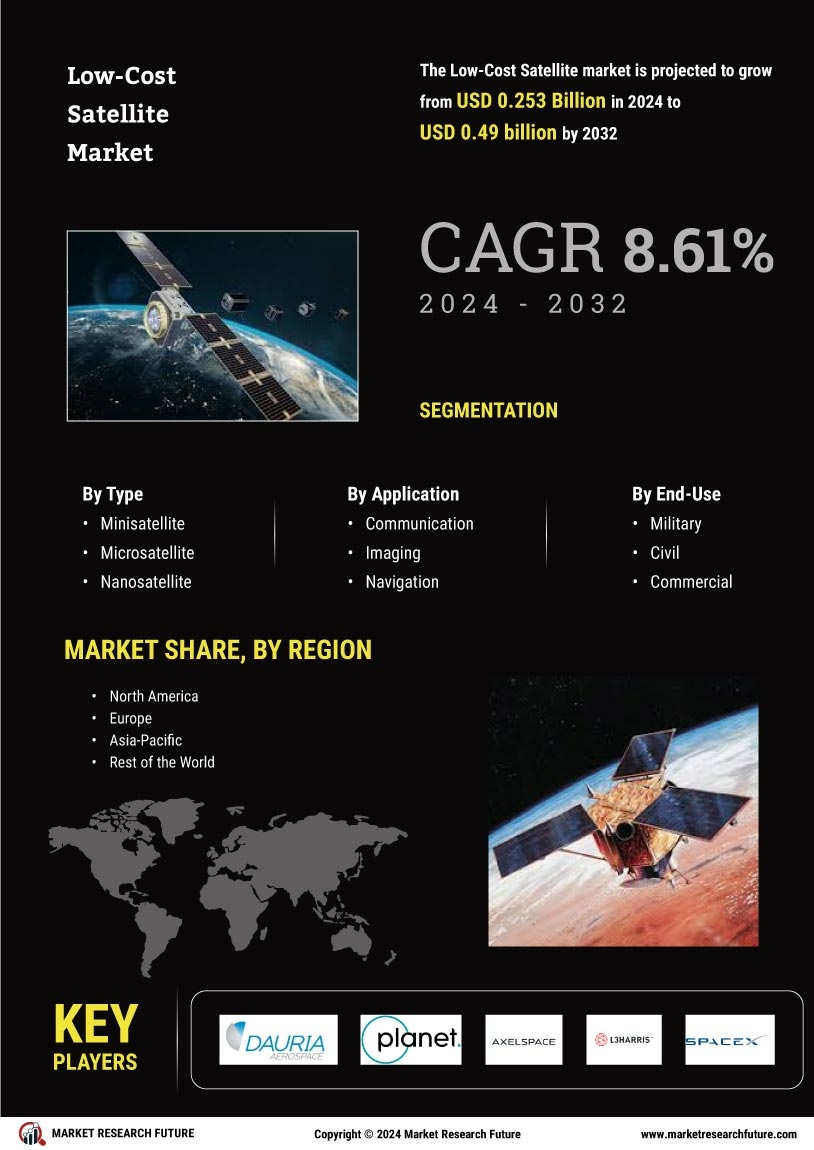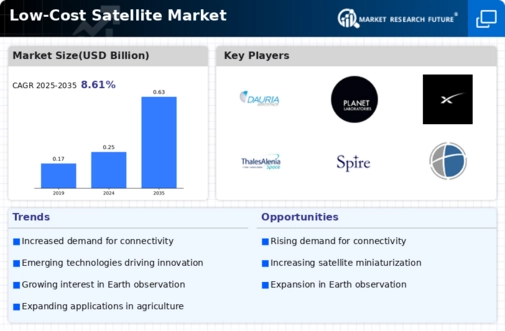Emergence of New Applications
The Low-Cost Satellite Market is experiencing a transformation due to the emergence of new applications across various sectors. Industries such as agriculture, disaster management, and environmental monitoring are increasingly leveraging satellite data for improved decision-making. For instance, the agricultural sector is utilizing low-cost satellites for precision farming, which enhances crop yields and optimizes resource use. In 2025, the market for satellite data applications is expected to expand, with a projected growth rate of around 18%. This diversification of applications not only broadens the scope of the Low-Cost Satellite Market but also attracts new stakeholders seeking to harness satellite technology for innovative solutions.
Government Initiatives and Support
Government initiatives play a crucial role in shaping the Low-Cost Satellite Market. Many governments are actively promoting the development and deployment of low-cost satellite technologies to enhance national capabilities in areas such as communication, surveillance, and scientific research. In 2025, several countries have launched programs aimed at fostering innovation in satellite technology, providing funding and regulatory support to emerging companies. This governmental backing is likely to stimulate growth within the Low-Cost Satellite Market, as it encourages collaboration between public and private sectors, ultimately leading to advancements in satellite capabilities and applications.
Increased Investment in Space Startups
The Low-Cost Satellite Market is witnessing a surge in investment from venture capitalists and private equity firms. This influx of capital is primarily directed towards startups that focus on developing innovative satellite technologies at reduced costs. In 2025, investments in space startups have reportedly reached unprecedented levels, with estimates suggesting a growth rate of over 20% annually. This financial backing enables these companies to explore new business models, such as satellite-as-a-service, which further democratizes access to satellite technology. As a result, the Low-Cost Satellite Market is likely to expand, attracting a diverse range of players, including those from non-traditional sectors.
Rising Demand for Communication Services
The demand for communication services is a pivotal driver in the Low-Cost Satellite Market. With the proliferation of internet-connected devices and the need for reliable connectivity in remote areas, low-cost satellites are increasingly viewed as a viable solution. In 2025, the market for satellite communication services is projected to grow significantly, with estimates indicating a compound annual growth rate of approximately 15%. This growth is fueled by the need for enhanced broadband services, particularly in underserved regions. Consequently, the Low-Cost Satellite Market is positioned to benefit from this trend, as companies strive to provide affordable and efficient communication solutions.
Technological Advancements in Miniaturization
Technological advancements in miniaturization are significantly influencing the Low-Cost Satellite Market. The development of smaller, lighter satellites has made it feasible to launch multiple satellites in a single mission, thereby reducing costs and increasing efficiency. In 2025, the trend towards miniaturization is expected to continue, with innovations in materials and manufacturing processes driving further reductions in satellite size and weight. This shift not only lowers launch costs but also enhances the operational capabilities of satellites, allowing for more complex missions. As a result, the Low-Cost Satellite Market is likely to see an influx of new satellite designs that capitalize on these advancements.

















